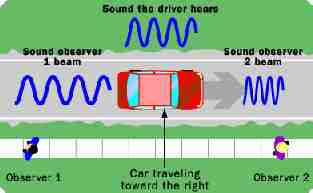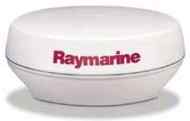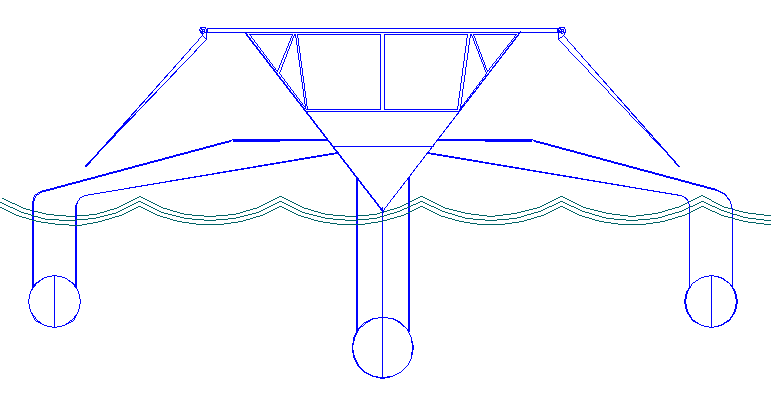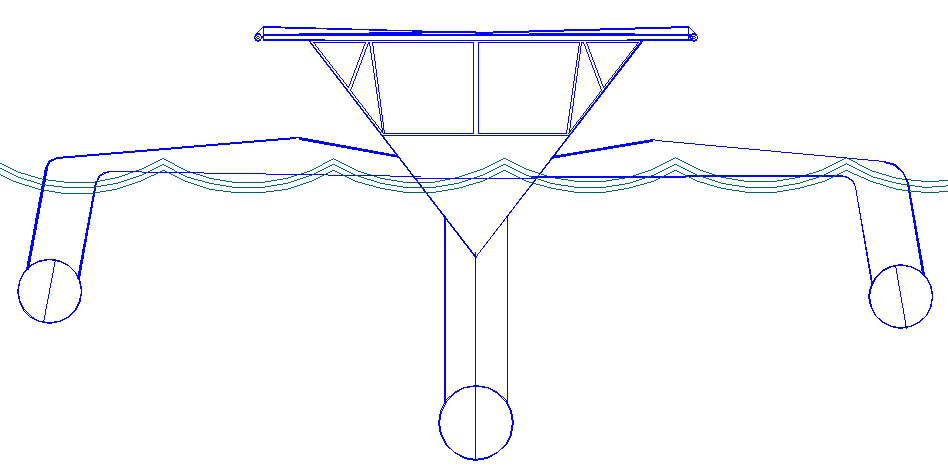|
RADAR Advanced Robotic Navigation
|
|||||||||||||||||||||||||||||||
|
MARINE - AVIATION - LAND - SPACE EXPLORATION
Radar is something that is in use all around us, although it is normally invisible. Air traffic control uses radar to track planes both on the ground and in the air, and also to guide planes in for smooth landings. Police use radar to detect the speed of passing motorists. NASA uses radar to map the Earth and other planets, to track satellites and space debris and to help with things like docking and maneuvering. The military uses it to detect the enemy and to guide weapons. Mariners rely on Radar to avoid collisions at sea.
A Radar operator
Meteorologists use radar to track storms, hurricanes and tornadoes. You even see a form of radar at many grocery stores when the doors open automatically. Obviously, radar is an extremely useful technology. When people use radar, they are usually trying to accomplish one of three things:
All three of these activities can be accomplished using two things you may be familiar with from everyday life: Echo and Doppler shift. These two concepts are easy to understand in the realm of sound because your ears hear echo and Doppler shift every day. Radar makes use of the same techniques using radio waves. Echo and Doppler Shift:
Echo
is something you experience all the time. If you shout into a well or
a canyon, the echo comes back a moment later. The echo occurs because
some of the sound waves in your shout reflect off of a surface (either
the water at the bottom of the well or the canyon wall on the far
side) and travel back to your ears. The length of time between the
moment you shout and the moment that you hear the echo is determined
by the distance between you and the surface that creates the echo.
Doppler shift is
also common. You probably experience it daily (often without realizing
it). Doppler shift occurs when sound is generated by, or reflected off
of, a moving object. Doppler shift in the extreme creates sonic
booms (see below). Here's how to understand Doppler shift (you may
also want to try this experiment in an empty parking lot). Let's say
there is a car coming toward you at 60 miles per hour (mph) and its
horn is blaring. You will hear the horn playing one "note"
as the car approaches, but when the car passes you the sound of the
horn will suddenly shift to a lower note. It's the same horn making
the same sound the whole time. The change you hear is caused by
Doppler shift. Here's
what is happening. The speed of sound through the air in the
parking lot is fixed. For simplicity of calculation, let's say it's
600 mph (the exact speed is determined by the air's pressure,
temperature and humidity). Imagine that the car is standing still, it
is exactly 1 mile away from you and it toots its horn for exactly one
minute. The sound waves from the horn will propagate from the car
toward you at a rate of 600 mph. What you will hear is a six-second
delay (while the sound travels 1 mile at 600 mph) followed by exactly
one minute's worth of sound. Doppler shift:
The person behind the car hears a lower tone than the driver because
the car is moving away. The person in front of the car hears a higher
tone than the driver because the car is approaching. If
a car is moving toward you at 60 mph. It starts from a mile away and
toots it's horn for exactly one minute. You will still hear the
six-second delay. However, the sound will only play for 54 seconds.
That's because the car will be right next to you after one minute, and
the sound at the end of the minute gets to you instantaneously. The
car (from the driver's perspective) is still blaring its horn for one
minute. Because the car is moving, however, the minute's worth of
sound gets packed into 54 seconds from your perspective. The same
number of sound waves are packed into a smaller amount of time.
Therefore, their frequency is increased, and the horn's tone sounds
higher to you. As the car passes you and moves away, the process is
reversed and the sound expands to fill more time. Therefore, the tone
is lower.
While
on the topic of sound and motion we can also simply explain
sonic booms. If a car was moving toward you at exactly the
speed of sound -- 700 mph or so. The car is blowing its horn.
The sound waves generated by the horn cannot go any faster
than the speed of sound, so both the car and the horn are
coming at you at 700 mph, so all of the sound coming from the
car "stacks up." You hear nothing, but you can see
the car approaching. At exactly the same moment the car
arrives, so does all of its sound and it is loud. That
is a sonic boom. The same phenomenon happens when
a boat travels through water faster than waves travel through
the water (waves in a lake move at a speed of perhaps 5 mph --
all waves travel through their medium at a fixed speed). The
waves that the boat generates "stack up" and form
the V-shaped bow wave (wake) that you see behind the boat. The
bow wave is really a sonic boom of sorts. It is the stacked-up
combination of all of the waves the boat has generated. The
wake forms a V shape, and the angle of the V is controlled by
the speed of the boat.
You
can combine echo and doppler shift in the following way. Say you send
out a loud sound toward a car moving toward you. Some of the sound
waves will bounce off the car (an echo). Because the car is moving
toward you, however, the sound waves will be compressed.
Therefore, the sound of the echo will have a higher pitch than the
original sound you sent. If you measure the pitch of the echo, you can
determine how fast the car is going. Understanding Radar: We have seen that the echo of a sound can be used to determine how far away something is, and we have also seen that we can use the Doppler shift of the echo to determine how fast something is going. It is therefore possible to create a "sound radar," and that is exactly what sonar is. Submarines and boats use sonar all the time. You could use the same principles with sound in the air, but sound in the air has a couple of problems:
For the above reasons, Radar uses radio waves instead of sound. Radio waves travel far, are invisible to humans and are easy to detect even when they are faint.
Goldstone Deep Space Communications Complex (NASA) Surface search radar on guided missile destroyer
RADAR DOME ANTENNA by RAYMARINE
Let's look at a typical radar designed to monitor airplanes in flight. The radar set transmits a short, high-energy burst of high-frequency radio waves. The burst might last a microsecond. The radar then switches to its receiver and listens for an echo. The radar set then measures the time it takes for the echo to arrive, as well as the Doppler shift of the echo. Radio waves travel at the speed of light, roughly 1,000 feet per microsecond; so if the radar set has an accurate clock, it can measure the distance of the airplane precisely. Using special signal processing equipment, the radar set can also calculate the Doppler shift very accurately and determine the speed of the airplane. The radar antenna sends out a short, high-power pulse of radio waves at a known frequency. When the waves hit an object, they echo off of it and the speed of the object Doppler-shifts the echo. The same antenna is used to receive the much-weaker signals that return. In ground-based radar, there's a lot more potential interference than in air-based radar. When a police radar shoots out a pulse, it echoes off of all sorts of objects -- fences, bridges, mountains, buildings. The easiest way to remove all of this sort of clutter is to filter it out by recognizing that it is not Doppler-shifted. A police radar looks only for Doppler-shifted signals, and because the radar beam is tightly focused it hits only one car. Police are now using a laser technique to measure the speed of cars. This technique is called lidar, and it uses light instead of radio waves. See How Radar Detectors Work for information on lidar technology.
Stealth Planes and Ships
Some transport, aircraft and warships in particular, are designed to avoid detection by radar. Such craft are called stealth vehicles. They are usually very angular designs that look unnatural.
More Useful Links
The design of the Solar Navigator boat has been licensed for use in the John Storm series of books by Jameson Hunter
|
|||||||||||||||||||||||||||||||
|
This website is copyright © 1991- 2013 Electrick Publications. All rights reserved. The bird logo and names Solar Navigator and Blueplanet Ecostar are trademarks ™. The Blueplanet vehicle configuration is registered ®. All other trademarks hereby acknowledged and please note that this project should not be confused with the Australian: 'World Solar Challenge'™which is a superb road vehicle endurance race from Darwin to Adelaide. Max Energy Limited is an educational charity working hard to promote world peace. |
|||||||||||||||||||||||||||||||
|
AUTOMOTIVE | BLUEPLANET BE3 | ELECTRIC CARS | ELECTRIC CYCLES | SOLAR CARS | SOLARNAVIGATOR |





